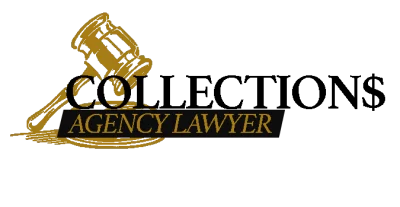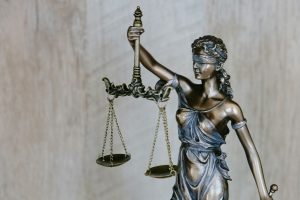When a corporation files for bankruptcy, creditors often find themselves navigating a complex recovery process to collect outstanding debts. Understanding this process is essential for maximizing recovery from corporate bankruptcy proceedings. This article provides structured guidelines across three phases of debt collection, from initial recovery efforts to the potential decision to litigate. It also outlines the fee structures and rates for debt collection services, ensuring that creditors are well-informed about the financial implications of their debt recovery strategies.
Key Takeaways
- Creditors must understand their role and the priority of claims in bankruptcy to effectively collect debts.
- Initial debt recovery efforts include sending demand letters, skip-tracing, and persistent communication within the first 60 days.
- If initial recovery is unsuccessful, cases are escalated to legal representation, where attorneys apply additional pressure through demand letters and calls.
- The decision to litigate is based on a thorough evaluation of the debtor’s assets and the likelihood of recovery, with clear options provided for proceeding or withdrawing the claim.
- Debt collection fees vary based on claim volume, account age and size, with competitive rates offered for different scenarios.
Understanding the Corporate Bankruptcy Process
The Role of Creditors in Bankruptcy
In the event of corporate bankruptcy, creditors play a pivotal role. Creditors must assert their claims to ensure they are recognized in the bankruptcy proceedings. Timely filing of proof of claims is crucial for creditors to potentially recover the debts owed to them.
Priority of claims determines the order in which creditors are paid. Secured creditors typically have the highest priority, followed by unsecured creditors and equity holders. Understanding this hierarchy is essential for setting realistic expectations about debt recovery.
- Identify your claim type
- File proof of claim promptly
- Monitor the bankruptcy process
Creditors should remain proactive throughout the bankruptcy process to maximize their chances of recovery.
Effective participation in the bankruptcy process may involve attending creditor meetings and reviewing the debtor’s reorganization plan. Creditors should be prepared to negotiate and possibly adjust their expectations based on the debtor’s financial situation and the overall pool of claims.
Priority of Claims and Payment Distribution
In the event of corporate bankruptcy, the distribution of assets follows a strict hierarchy. Secured creditors take precedence, followed by unsecured creditors and equity holders. Understanding this pecking order is crucial for debt recovery.
Priority of claims determines the sequence of payment distribution:
- Secured creditors with collateral claims
- Administrative expenses incurred during bankruptcy
- Unsecured creditors, including bondholders
- Equity holders, often left with little or no recovery
The reality is stark: lower-tiered claimants face a higher risk of minimal or no return. It’s essential to assess your claim’s position in this hierarchy to set realistic recovery expectations.
The Impact of Bankruptcy on Debt Collection
When a corporation declares bankruptcy, the landscape of debt collection shifts dramatically. Creditors must navigate a complex legal framework to recover any owed funds. The automatic stay imposed by bankruptcy halts all collection activities, forcing creditors to seek recourse through the bankruptcy court.
Priority of claims becomes paramount, as it dictates the order in which creditors are paid from the debtor’s remaining assets. Unsecured creditors often find themselves at the end of the line, with recovery prospects dimming:
- Secured creditors
- Administrative expenses
- Priority unsecured claims
- Nonpriority unsecured claims
Creditors should adjust their expectations and strategies accordingly, as the usual avenues for debt recovery are now constrained by the bankruptcy process.
Ultimately, the amount and timing of any recovery hinge on the specifics of the bankruptcy case and the creditor’s position in the hierarchy of claims. Proactive engagement and a thorough understanding of the process are essential for maximizing potential recoveries.
Phase One: Initial Debt Recovery Efforts
Immediate Actions Post-Account Placement
Once an account is placed for collection, immediate action is crucial. Within 24 hours, the debt recovery process kicks off with a series of strategic steps:
- The dispatch of the first demand letter to the debtor.
- Comprehensive skip-tracing to locate the best financial and contact information.
- Persistent contact attempts through calls, emails, and texts.
Expect daily efforts to engage with the debtor, aiming for a swift resolution. If these initial attempts falter, the case advances to Phase Two, involving legal muscle.
Remember, the early bird gets the worm. Quick and decisive actions set the tone for the recovery process, signaling seriousness and intent.
Skip-Tracing and Investigative Techniques
Effective skip-tracing is a cornerstone of debt recovery from corporate bankruptcy proceedings. By leveraging investigative techniques, creditors can uncover the financial trails left by bankrupt companies. This process often involves:
- Utilizing proprietary databases to track down debtor assets.
- Analyzing public records for hidden liabilities or asset transfers.
- Engaging professional investigators when necessary.
The goal is to paint a comprehensive picture of the debtor’s financial situation, enabling informed decisions on debt recovery efforts.
It’s crucial to use multiple communication channels to maintain pressure and demonstrate seriousness in recovering debts. Persistence in these efforts can lead to uncovering valuable information that may otherwise remain hidden.
Communication Strategies with Debtors
Effective communication is the linchpin of successful debt recovery. Initial contact sets the tone: be clear, firm, and professional. Tailor your approach to the debtor’s situation; empathy can go a long way.
Persistence is key. Follow up regularly, but vary the methods—calls, emails, texts—to maintain pressure without harassment. Document every interaction meticulously for legal leverage.
Remember, the goal is to engage the debtor in a dialogue that leads to payment, not to alienate or intimidate.
Here’s a quick checklist for communication:
- Establish the debt details and repayment expectations upfront.
- Keep conversations focused and goal-oriented.
- Use a mix of communication channels for follow-ups.
- Maintain a record of all communications.
The corporate funds recovery system involves initial contact, escalation to attorneys for legal action, and litigation with closure recommendations. Persistence and thorough information gathering are crucial for success.
Phase Two: Escalation to Legal Representation
Transitioning the Case to an Attorney
When the debt recovery process transitions to attorney intervention, it marks a pivotal shift in strategy. The attorney’s role is to apply harder tactics, leveraging legal expertise to increase pressure on the debtor. Before escalating to litigation, a critical step is to assess the debtor’s solvency and assets. This evaluation informs the decision on whether to pursue legal action or to continue with standard collection activities.
The transition to legal representation is not a decision to be taken lightly. It involves a shift in approach and potentially significant costs.
The fee structure for attorney intervention is typically contingent on several factors, including the quantity of claims and the age of the account. It’s essential to understand these rates as they will impact the overall cost of debt recovery efforts.
- Immediate drafting of demand letters on law firm letterhead
- Persistent attempts to contact the debtor via calls and letters
- Evaluation of the case and recommendation on litigation
Remember, if litigation is recommended and you decide to proceed, upfront legal costs will be required. These costs vary but generally range between $600 to $700, depending on the jurisdiction.
Attorney’s Initial Demand for Payment
Once the case transitions to legal representation, the attorney’s initial demand for payment marks a critical escalation. The demand letter serves as a formal notice to the debtor, outlining the debt owed and the consequences of non-payment. It’s a powerful tool that can prompt immediate action.
Communication is intensified, with the attorney employing a combination of letters and phone calls to convey urgency. The debtor is given a clear deadline for payment, after which legal proceedings may commence.
- Drafting of the demand letter
- Setting a firm payment deadline
- Outlining potential legal actions
The initial demand is not just a request; it’s a strategic move designed to elicit a prompt response.
The debt collection process involves demand letters, phone outreach, and legal action. Rates vary based on claim volume and age. Options include claim withdrawal or litigation with upfront fees.
Continued Communication and Legal Pressure
Maintaining persistent communication is crucial in the debt recovery process. Consistent legal pressure serves as a reminder to the debtor of the seriousness of their situation. This phase involves a strategic blend of negotiation and legal tactics to incentivize settlement before proceeding to court.
The goal is to achieve a resolution without the need for litigation, which can be costly and uncertain.
If the debtor remains unresponsive, the escalation to litigation becomes inevitable. At this juncture, it’s important to weigh the costs against the potential recovery. A decision to litigate should be informed by a realistic assessment of the debtor’s ability to pay.
- Initial legal demand sent
- Regular follow-ups
- Final notice before litigation
The table below outlines the potential costs associated with moving forward with legal action:
| Action | Cost Range |
|---|---|
| Court Costs | $600 – $700 |
| Filing Fees | Included in Court Costs |
Remember, an efficient debt recovery process begins with initial contact and negotiation, escalating to legal action if needed. However, the costs involved in litigation come with no guaranteed outcome.
Phase Three: Making the Decision to Litigate
Evaluating the Likelihood of Debt Recovery
Assessing the potential for successful debt recovery is a pivotal moment in the bankruptcy process. Decisions hinge on detailed investigations of the debtor’s assets and the surrounding facts of the case. If the outlook is grim, a closure of the case may be the most prudent path, sparing you from unnecessary expenses.
When litigation appears viable, you’re faced with a choice: proceed with legal action, incurring upfront costs, or opt for continued standard collection efforts. Upfront legal fees, such as court costs and filing fees, typically range from $600 to $700, depending on the debtor’s jurisdiction.
Our competitive fee structure is tailored to the claim volume, ensuring you get the most cost-effective service for your specific situation.
Remember, if litigation does not result in debt recovery, the case will be closed with no further financial obligation to our firm or affiliated attorney. This risk-free approach underscores our commitment to providing value-driven services.
Understanding the Costs and Risks of Litigation
Embarking on litigation is a strategic decision that hinges on a careful assessment of the debtor’s ability to pay. The initial financial outlay for court costs and filing fees is a crucial consideration, typically ranging from $600 to $700. This investment is made with the expectation of recovering both the debt and the associated legal costs. However, should litigation efforts not yield the desired outcome, the creditor does not incur additional costs beyond the initial expenditure.
Success in litigation means recouping the debt and legal expenses, turning a potential loss into a financial recovery. Conversely, failure to collect through legal means results in the closure of the case, with no further financial obligations to the firm or affiliated attorney.
Deciding to litigate requires weighing the potential for debt recovery against the upfront costs and the inherent risks of the legal process.
Here’s a breakdown of potential outcomes and associated costs:
- Success: Debt + Legal Costs Recovered
- Failure: Case Closed, No Additional Costs
The decision to litigate should be informed by a comprehensive evaluation of the debtor’s financial status and the likelihood of successful debt recovery.
Alternatives to Litigation
When litigation seems a daunting or impractical path, exploring alternatives can be a wise move. Mediation and arbitration offer less adversarial routes, often leading to faster, cost-effective resolutions. These methods allow for negotiation and compromise, potentially preserving business relationships.
Consider the benefits of alternative dispute resolution: reduced legal fees, quicker settlements, and less strain on resources.
Structured settlements are another avenue, providing a way to agree on a payment plan that suits both parties. It’s crucial to weigh the pros and cons of each option, keeping in mind the ultimate goal: recovering the debt efficiently.
Here’s a quick rundown of alternatives:
- Mediation: A neutral third party facilitates a mutually acceptable agreement.
- Arbitration: An arbitrator makes a binding decision based on the evidence presented.
- Structured Settlements: Negotiated payment plans that allow for gradual debt recovery.
Navigating post-lawsuit debt recovery involves evaluating litigation viability, cost considerations, and strategic debt collection methods to maximize recovery while minimizing financial risks.
Fee Structures and Rates for Debt Collection Services
Determining Collection Rates Based on Claim Volume
When it comes to debt collection in corporate bankruptcy proceedings, the volume of claims can significantly influence the fee structure. The more claims you submit, the more favorable the rates tend to be. This tiered approach incentivizes bulk placements and reflects the economies of scale in debt recovery operations.
Claim volume is a critical factor in determining collection rates. Agencies often offer sliding scale fees that decrease as the number of claims increases. Here’s a simplified breakdown:
- 1-9 claims: Higher rates due to lower volume
- 10+ claims: Reduced rates for bulk submissions
Remember, the goal is to maximize recovery while minimizing costs. A strategic approach to claim volume can lead to more efficient debt collection.
It’s essential to understand that rates may also vary based on the age and size of accounts, with older or smaller accounts typically incurring higher fees. This is to compensate for the increased difficulty in collecting such debts.
Rates for Different Ages and Sizes of Accounts
The cost of debt collection is not one-size-fits-all. Collection agency rates vary based on the age of the account, the amount owed, and whether legal action is involved. Here’s a quick breakdown:
- Accounts under 1 year: 30% (1-9 claims) or 27% (10+ claims) of the amount collected.
- Accounts over 1 year: 40% (1-9 claims) or 35% (10+ claims) of the amount collected.
- Accounts under $1000: 50% of the amount collected, regardless of claim volume.
- Accounts requiring attorney involvement: 50% of the amount collected.
Litigation introduces additional costs, typically $600-$700 upfront. This investment is necessary to initiate legal proceedings and covers court costs and filing fees. Remember, ignoring court-ordered payment can lead to serious consequences.
The fee structure is designed to align the collection agency’s incentives with your recovery outcomes. The older and smaller the debt, the higher the percentage—compensating for the increased difficulty in recovery.
Costs Associated with Attorney-Placed Accounts
When escalating debt recovery to legal action, understanding the fee structures and associated costs is crucial. Upfront legal costs are a reality of litigation, including court costs and filing fees, typically ranging from $600 to $700. These fees are necessary for the attorney to initiate a lawsuit on your behalf.
The decision to litigate should weigh the potential for debt recovery against the costs incurred. It’s essential to evaluate whether the expected recovery justifies the expenses of legal action.
Collection rates for attorney-placed accounts are generally set at 50% of the amount collected, regardless of the age or size of the account. This rate reflects the additional complexity and effort involved in pursuing legal avenues for debt recovery.
Here’s a quick overview of the rates:
- Accounts under 1 year in age: 30% or 27% (based on claim volume)
- Accounts over 1 year in age: 40% or 35% (based on claim volume)
- Accounts under $1000.00: 50% or 40% (based on claim volume)
- Attorney-placed accounts: 50% of the amount collected
The page discusses upfront legal costs, collection rates, and attorney fees in debt recovery. It emphasizes evaluating costs versus potential recovery and understanding fee structures for successful litigation.
Navigating the complexities of debt recovery can be challenging, but with Debt Collectors International, you’re in capable hands. Our tailored fee structures and competitive rates ensure that you get the most efficient and effective debt collection services available. Whether you’re dealing with commercial collections, skip tracing, or judgment enforcement, our expert team is ready to assist you. Don’t let unpaid debts disrupt your cash flow. Visit our website today to learn more about our services and how we can help you maximize your recoveries with no upfront fees. Take the first step towards securing your finances now!
Frequently Asked Questions
What immediate actions should be taken after placing an account for debt recovery?
Within 24 hours of placing an account, a series of actions should be initiated including sending letters to the debtor, skip-tracing and investigating to obtain financial and contact information, and making contact attempts through various communication methods like phone calls, emails, and faxes.
How are creditors prioritized during corporate bankruptcy proceedings?
Creditors are prioritized based on the type of claim they hold, with secured creditors typically being paid first, followed by unsecured creditors. The specific priority of claims is determined by bankruptcy laws and the reorganization plan.
What happens if debt recovery through standard collection activities fails?
If standard collection activities fail, the case can be escalated to Phase Two, where it is forwarded to an affiliated attorney within the debtor’s jurisdiction for continued communication and legal pressure, including drafting demand letters and making phone calls.
What are the potential outcomes of Phase Three in the debt recovery process?
In Phase Three, after evaluating the case and the debtor’s assets, the recommendation will either be to close the case if recovery is unlikely, or to proceed with litigation. If litigation is recommended and you agree, upfront legal costs will be required, but if attempts to collect via litigation fail, you will owe nothing further.
How are collection rates determined for debt collection services?
Collection rates are determined based on the number of claims submitted, the age of the accounts, and whether the accounts are placed with an attorney. Rates vary, with lower percentages for higher claim volumes and higher percentages for older accounts or those requiring attorney involvement.
What alternatives are there to litigation if the likelihood of debt recovery is low?
If the likelihood of debt recovery is low, alternatives to litigation include closing the case or continuing to pursue the debtors with standard collection activities such as calls, emails, and faxes without additional legal action.





